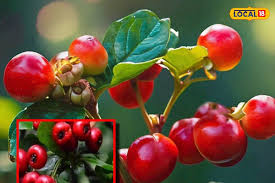While
a plethora of fruits can be found in the marketplace, certain exceptional
varieties unique to the highlands of Uttarakhand deliver an extensive array of
health perks. These fruits, abundant in vitamins, antioxidants, and vital
minerals, are celebrated for their therapeutic qualities. Here’s a glimpse at
five such fruits and how they can enhance your health.
1. Hisalu
Hisalu,
a fruit indigenous to the elevated terrains of Uttarakhand, is brimming with
medicinal benefits. As stated by Dr. Chauhan, a researcher at the High Altitude
Plant Physiology Research Centre, Hisalu aids in easing digestive troubles like
constipation, indigestion, and bloating. It is also high in Vitamin C, which
bolsters the immune system, and its antioxidant characteristics promote general
well-being.
Exclusively
found in the hilly areas of Uttarakhand, Ghigharu is recognized for its potent
antioxidant and anti-inflammatory effects. This fruit is particularly advantageous
for cardiovascular health due to its heart-strengthening properties. It can
assist in minimizing the risk of heart ailments and reducing hypertension.
A
distinctive type of orange, Malta flourishes in the mountainous terrains of
Uttarakhand. It contains anthocyanin, a robust antioxidant that imparts a
deeper hue compared to conventional oranges. Malta is loaded with Vitamin C,
Vitamin A, potassium, manganese, calcium, fiber, and antioxidants, rendering it
an excellent selection for enhancing immunity and overall health.
Kilmora,
found in the woodlands of Uttarakhand, is highly prized for its anti-diabetic,
anti-inflammatory, anti-viral, and anti-bacterial traits. These therapeutic
advantages make it a significant fruit in both traditional healing and
contemporary wellness practices.
Bedu,
often referred to as Himalayan fig, grows naturally in the forests of
Uttarakhand. This perennial fruit stands as an exceptional source of vitamins
A, B1, B2, fiber, carbohydrates, and vital amino acids, making it a
nutrient-dense addition to any meal plan.











